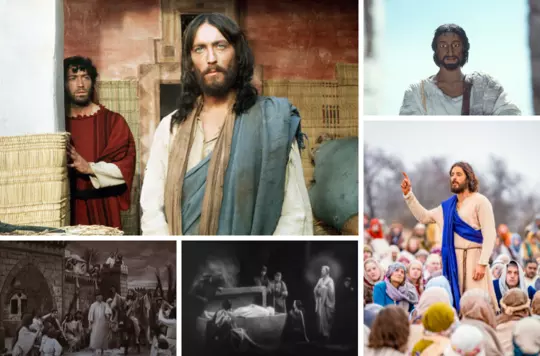10 April 2023
Seeing and believing: How is truth revealed to us?
Major Malcolm Martin
Major Malcolm Martin says we don’t need to grasp the truth all at once.
Key text
Easter eggs now appear in early January, while hot cross buns are available all year round, in a bewildering array of flavours. Despite these somewhat crass examples of commercialisation, Easter generally lags far behind Christmas in terms of wider public consciousness. Perhaps it is partly because Christmas focuses almost exclusively on happiness and joy, while the Easter weekend can seem to encompass an exhausting range of emotions – from the grief of Good Friday to the wonder of Easter Day, via the not-quite-knowing-how-to-feel of Holy Saturday.
Pause and reflect
- To what extent do you celebrate Easter as the seminal event of the Christian faith?
A degree of haste pervades John’s account of what happens following the Crucifixion. It begins with hurried arrangements for the burial of Jesus, followed by a lot of running back and forth on Easter Day. Joseph of Arimathea and Nicodemus, who had previously been fearful of openly following Jesus, come out into the light to arrange for his burial before sundown. They would not have been favourable with the Pharisees (see John 12:42 and 43); nevertheless, they ensure that the body of Jesus is treated with a fitting degree of honour.
Jewish custom was to bury executed lawbreakers in a common grave, ensuring that family tombs were not tainted. Roman custom generally left the corpses of crucified criminals in place as an example and warning, although exceptions could be made. In theory, Pilate could have turned down the request due to the serious nature of Jesus’ conviction. His willingness to release the body perhaps demonstrates a continuing sense of being ill at ease with the execution.
Powdered spices would be fitted among the cloth wrappings and heaped around the body to combat the smell of decay. The vast quantity utilised here, together with the placement of the body in a previously unused garden tomb, suggests a royal burial, which emphasises the kingship theme that runs throughout John’s Passion narrative. This prestigious tomb is not a place of defeat, but one of honour and glory – shortly to be one of even greater glory. The task of Jesus has been completed (see John 19:30).
Pause and reflect
- Are there times when you have been a secret disciple, cautious and afraid to openly speak about your faith?
- How might you serve Jesus, regardless of the inconvenience and personal cost?
Mary’s visit to the burial site may have been to fulfil Jewish mourning customs, but could also suggest that Joseph and Nicodemus did not have time to complete all the burial arrangements. Cave tombs would normally include a plinth to place the body, to be wrapped in cloths and spices, before it was placed into a niche in the wall. A moveable stone doorway facilitated further burials within the family tomb and allowed for bones to be collected in an ossuary box once decomposition was complete.
Arriving in the pre-dawn darkness, Mary discovers that the stone has already been moved. Unable to see further details in the gloom, she rushes back to report to Peter and the ‘other disciple’ (v2) that the body has been moved and cries despairingly: ‘We don’t know where they have put him!’ The two disciples, who fulfil the requirements of valid testimony (see Deuteronomy 19:15), race to the scene.
The other disciple, who is usually thought to be younger and fitter, arrives first and glances into the tomb, seeing the grave clothes as well as the open door. Peter arrives and, with characteristic impetuosity, rushes into the tomb, taking careful notice of the neatly ordered scene, which is far from the chaotic disarray that might have been expected if grave robbers had been at work. His companion joins him in the tomb, where he seems to begin to put some of the pieces together: ‘He saw and believed’ (v8).
It is not, however, entirely clear exactly what he believed. Verse 9 suggests that it was not a full understanding of the theological significance of the Resurrection, but it was certainly more than just believing Mary’s account of a missing body. The language suggests a deep faith that Jesus is alive, even without the benefits of the later personal encounters with the risen Lord.
The purposeful arrangement of the graveclothes indicates that, unlike the resurrection of Lazarus, no unbinding was required (see John 11:44). This is a sign of something more, this is the promise of new life: ‘The light shines in the darkness, and the darkness has not overcome it’ (John 1:5).
Theologian Tom Wright wrote: ‘We who live in the interval between Jesus’ resurrection and the final rescue and transformation of the whole world are called to be new-creation people here and now.’
Pause and reflect
- What do you find most compelling about the Easter story?
There is a progressive deepening of ‘seeing’ within this story: Mary sees the stone rolled away, the other disciple sees some of the linen cloths, Peter sees the whole scene and tries to work it out, the other disciple then begins to see it all with a degree of comprehension.
It evidently takes time for the truth to fully dawn on the disciples, who return home still pondering, but Easter is the beginning of a new understanding. We can be encouraged that we don’t need to grasp the truth all at once, but we can celebrate the Easter promise of transformation.
Pause and reflect
- Mumford & Sons sang: ‘Roll away your stone, I will roll away mine./ Together we can see what we will find.’ Are there aspects of your own faith where you can identify a progressive deepening of understanding?
Bible study by

Major Malcolm Martin
Corps Officer, Thornton Heath, Publishing Secretary, THQ
Discover more

Devotions, articles and resources to help you journey through Lent and celebrate Easter.

Ivan Radford explores portrayals of Jesus and the events of Easter on film and TV.


